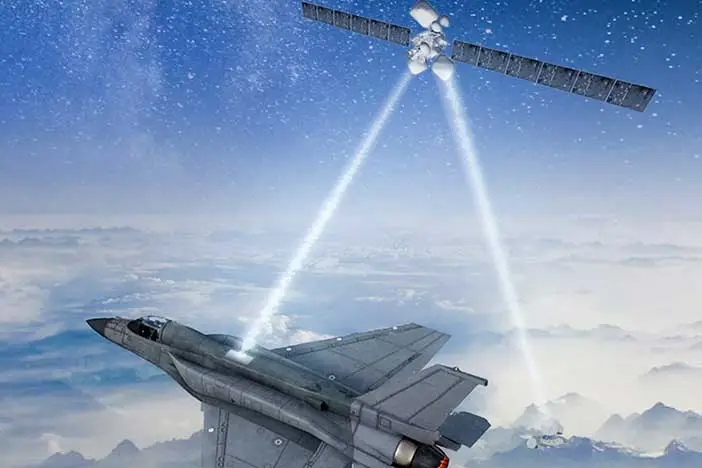Indian Air and Space Force (IASF)
Space fighters, Military satellites - IAF plans to transform into a superpower in space
By R. Anil Kumar
Synopsis
- The Indian Air Force (IAF) is all set to transform into the Indian Air and Space Force (IASF) as it expands its capabilities in the aerospace domain.
- With a new doctrine focused on the effective utilization of the air and space continuum, the IAF aims to fully exploit the potential of space beyond its current focus on intelligence, surveillance, reconnaissance, communication, and navigation capabilities.
- Collaborating with organizations such as ISRO, DRDO, IN-Space, and the private industry, the IAF envisions having over 100 military satellites and developing advanced space-related technologies.
Bangalore. Only the availability of the best military equipment wouldn’t ensure success on the battleground. A modern military needs a well-trained force, well-rehearsed multi-domain operations, effective tactics, and a robust logistics supply chain.

The creation of the Indian Space Force is more than overdue, and its importance cannot be overemphasized. India’s space assets, including the ground facilities, are worth $40 billion and is expanding. The Indian military satellite network alone would expand to over 100 satellites in less than a decade.
If ISRO and civilian companies need a Space Force for safe passage and security then the Indian Army, Navy, Air Force, and the future Rocket Force would need intelligence, surveillance and reconnaissance (ISR) capabilities through space assets, its assistance to get inputs and safeguard their communication links to operate in a hostile environment.
To cope up with the present and future challenges, the Indian Air Force (IAF) is undergoing a significant transformation as it seeks to become the Indian Air and Space Force (IASF) and expand its capabilities in the aerospace domain. With a new doctrine centred around the effective utilization of the “air and space continuum” and a “Space Vision 2047,” the IAF has presented a detailed proposal to the government for its renaming. According to sources, the proposal is expected to receive clearance soon.
In line with this transformation, the IAF is intensifying its efforts to fully exploit the potential of space, moving beyond its current focus on intelligence, surveillance, reconnaissance, communication, and navigation capabilities.
Collaborating with organizations such as ISRO, DRDO, IN-Space, and the private industry, the IAF aims to develop niche space-related technologies.
This includes advancements in positioning, navigation, and timing (PNT), advanced intelligence, surveillance, and communication systems, space weather prediction, space situational awareness, and space traffic management. The IAF envisions India having over 100 military satellites, both large and small, within the next seven to eight years, with active participation from the private sector.
Additionally, the Defence Space Agency, established in 2019, is set to evolve into a fully-fledged Space Command. Recognizing the importance of space in future conflicts, the IAF has incorporated space-related training for its officers and airmen.
This includes exercises that simulate space-related contingencies. According to sources, this transition from air to space is a natural progression for the IAF. Senior personnel in the Air Force have emphasized the need for India to develop defensive and offensive capabilities in the space domain.
According to them, the battles of the future will be fought in near space (20 to 100 km altitude) and outer space. To operate seamlessly in these domains, the IAF is developing advanced winged bodies. The IAF believes that India must be prepared for these challenges.





